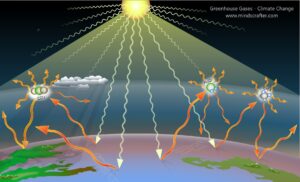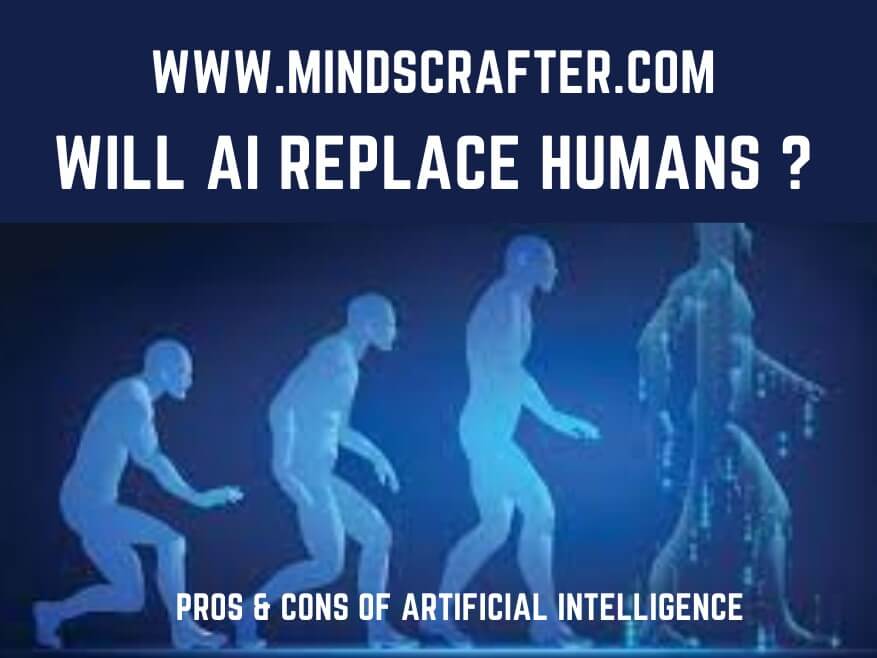
From Forecasting to Mitigation: The Impact of AI on Climate Change Solutions
Climate change is among the biggest challenges we face in the modern world. The effects of global warming are becoming more apparent every day, and it’s clear that we need to take action to mitigate its impact. Fortunately, artificial intelligence (AI) is emerging as a powerful tool in the fight against climate change. AI can help us with everything from forecasting weather patterns to reducing carbon emissions. This article will explore how AI is being used to create effective climate change solutions. This short article will delve into the latest research and case studies and examine the potential impact of AI on the future of our planet. Whether you’re a climate change activist or a tech enthusiast, this article will fascinate and inspire you. So, let’s discover how AI transforms how we approach climate change.
Understanding Climate Change:

Before we look into the role of AI in climate change mitigation, it’s essential to understand the science behind climate change. Climate change refers to the long-term changes in temperature, rainfall, and other weather patterns caused by the increased concentration of greenhouse gases in the atmosphere. These gases, such as carbon dioxide, methane, and nitrous oxide, trap heat from the sun and prevent it from escaping back into space. As a result, the Earth’s surface and atmosphere warm up, leading to various environmental and social impacts.
The impacts of climate change are already being felt around the world. We’re seeing more frequent and severe weather events, such as floods, droughts, hurricanes, and wildfires. We also see a decline in biodiversity as species struggle to adapt to changing habitats. Climate change also affects human health, with increased exposure to diseases and air pollution. Given the scale and complexity of the problem, it’s clear that we need innovative solutions to address climate change.
The Role of AI in Climate Change Mitigation:
Artificial intelligence (AI) has emerged as a powerful tool in the fight against climate change. AI refers to using machine learning algorithms to analyze large datasets and make predictions or recommendations. Using AI, we can identify patterns and insights that would be difficult to detect using traditional methods. This can help us develop more effective climate change solutions based on data-driven insights.
AI can be used in various ways to mitigate the impacts of climate change. For example, it can help us forecast weather patterns more accurately, enabling us to take action to reduce the risk of natural disasters.
AI can also be used to optimize energy systems, such as power grids and wind farms, which can help to reduce carbon emissions. In addition, AI can improve the management of natural resources, such as forests and water supplies, which are critical for climate change adaptation.
AI Solutions for Forecasting Climate Change:
One of the most promising applications of AI in climate change mitigation is in forecasting weather patterns. By using machine learning algorithms to analyze historical weather data, we can develop models to predict future weather patterns more accurately. This can help us to prepare for extreme weather events, such as hurricanes, floods, and wildfires, and reduce the risks to human life and property.
For example, the National Oceanic and Atmospheric Administration (NOAA) has been using AI to improve its weather forecasting capabilities. The agency has developed a machine learning model that can predict the movement of hurricanes with greater accuracy than traditional methods. Using this model, the agency can issue more accurate and timely warnings to people in affected areas, which can help reduce the risk of property damage and loss of life.
AI Solutions for Renewable Energy:
Another area where AI can significantly impact climate change mitigation is in the field of renewable energy. Using AI to optimize energy systems can reduce our reliance on fossil fuels and increase the share of renewable energy in our energy mix. This can help to reduce carbon emissions and mitigate the impacts of climate change.
For example, Google has been using AI to optimize the energy consumption of its data center’s. The company has developed a machine learning algorithm that can predict the energy demands of its data centers’ and adjust the energy supply accordingly. Using this algorithm, Google has reduced its energy consumption by 15%, significantly reducing carbon emissions.

AI Solutions for Agriculture and Land Management:
AI can also improve agriculture and land management, which is critical for climate change adaptation. By using machine learning algorithms to analyze data about soil, water, and climate conditions, we can develop more effective strategies for managing land resources. This can help to improve crop yields, reduce water usage, and promote sustainable land use practices.
For example, the startup Taranis has developed an AI-powered crop monitoring system that can help farmers detect crop diseases and pests early. Using machine learning algorithms to analyze images of crops, the system can identify early warning signs of crop damage and provide farmers with recommendations for mitigating the damage. This can help to reduce crop losses and promote more sustainable agriculture practices.
AI Solutions for Transportation and Infrastructure:
AI can also improve transportation and infrastructure, which significantly contribute to carbon emissions. Using machine learning algorithms to optimize transportation systems, we can reduce the energy required to move people and goods. This can help to reduce carbon emissions and promote sustainable transportation practices.
For example, the ride-sharing company Uber has been using AI to optimize its ride-sharing service. By using machine learning algorithms to predict ride demand and driver availability, the company can match riders with drivers more efficiently, reducing the time drivers spend waiting for riders. This can help to reduce the number of cars on the road and promote more sustainable transportation practices.
AI Solutions for Climate Adaptation:
Finally, AI can promote climate adaptation, which involves preparing for the impacts of climate change already underway. By using machine learning algorithms to analyze data about climate change impacts, we can develop more effective strategies for adapting to changing weather patterns. This can help to reduce the risks to human life and property and promote greater resilience in the face of climate change.
For example, the startup One Concern has developed an AI-powered disaster response system to help emergency responders coordinate their efforts more effectively. Using machine learning algorithms to analyze data about weather patterns, infrastructure, and population demographics, the system can predict the impact of natural disasters and provide real-time recommendations for responding. This can help to reduce the risks to human life and property and promote greater resilience in the face of climate change.
Challenges and Limitations of AI in Climate Change Mitigation:
While AI has the potential to make a significant impact on climate change mitigation, several challenges and limitations need to be addressed. One of the biggest challenges is the availability of data. AI algorithms require large amounts of high-quality data to be effective, and in many cases, this data is not available.
Another challenge is the complexity of climate change. Climate change is a complex and multifaceted problem involving many factors, such as weather patterns, natural resources, and human behaviour. Developing effective AI solutions for climate change mitigation requires a deep understanding of these factors and how they interact.
The Future of AI and Climate Change Solutions:
Despite these challenges, the future of AI and climate change solutions looks promising. We expect to see more innovative solutions for climate change mitigation and adaptation as AI technology advances. By using AI to analyze data, make predictions, and optimize systems, we can create more effective and sustainable solutions for addressing climate change.
Summary / Conclusion:
Climate change is one of the biggest challenges we face today, requiring innovative solutions to mitigate its impact. Artificial intelligence (AI) is emerging as a powerful tool in the fight against climate change. By using AI, we can create more effective climate change solutions that can help us reduce carbon emissions, manage natural resources, and adapt to changing weather patterns. While there are challenges and limitations to using AI in climate change mitigation, the potential benefits are enormous. As AI technology advances, we expect to see more innovative solutions for addressing climate change and creating a more sustainable future for our planet.


AI is a tool. The excessive use of fossil fuel, migration of people from rural to urban areas, energy consumption in transportation, industries and many other areas are causing climate change. Particularly Fossil fuel usage, deforestation, and some agricultural and industrial practices increase greenhouse gases, notably carbon dioxide and methane. Greenhouse gases absorb some of the heat that the Earth radiates after it warms from sunlight. Larger amounts of these gases trap more heat in Earth’s lower atmosphere, causing global warming.
Artificial Intelligence can help and transform the old methods of energy creation, more solar panels and other materials can help in creation of alternative energy sources plus transformation of agriculture, industries, transportation, timely collection of data from machine learning methods can contribute to this important global issue. This article is very important in terms of understanding the basics of Climate Change. I have given some links and you can find many other relevant articles in this website which will help to understand this issue in a greater level. Thanks for reading and visiting my website.
Very interesting and different topic.